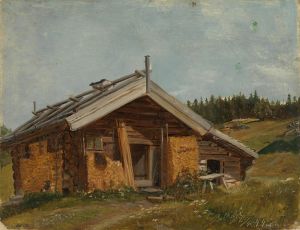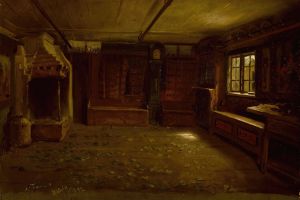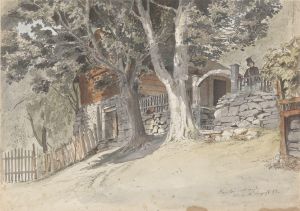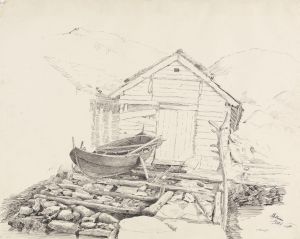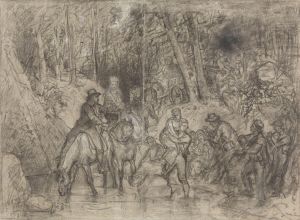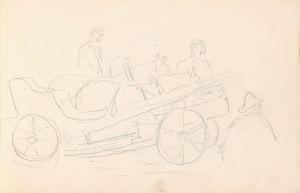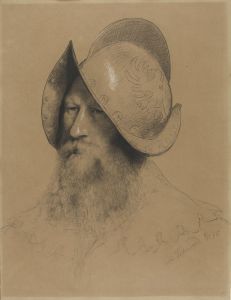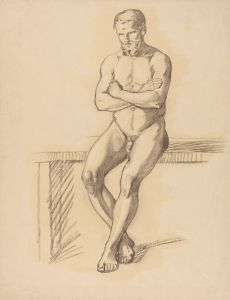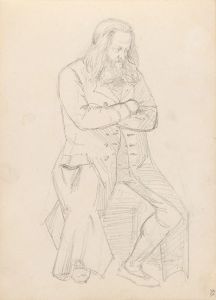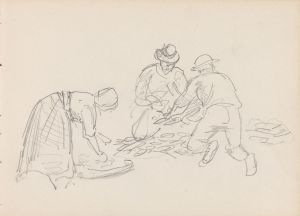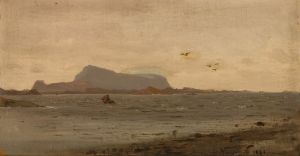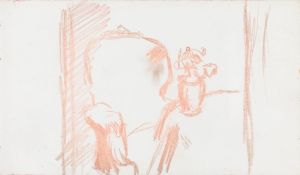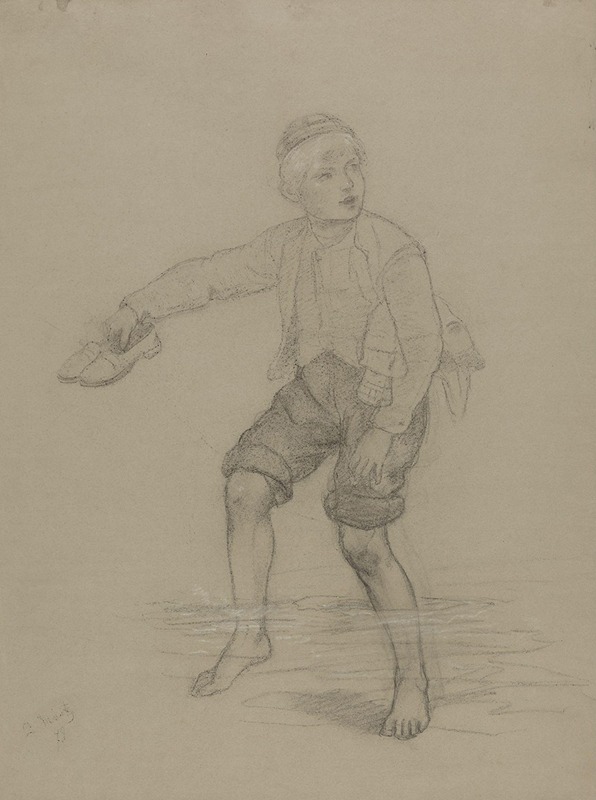
Gutt som vasser
A hand-painted replica of Adolph Tidemand’s masterpiece Gutt som vasser, meticulously crafted by professional artists to capture the true essence of the original. Each piece is created with museum-quality canvas and rare mineral pigments, carefully painted by experienced artists with delicate brushstrokes and rich, layered colors to perfectly recreate the texture of the original artwork. Unlike machine-printed reproductions, this hand-painted version brings the painting to life, infused with the artist’s emotions and skill in every stroke. Whether for personal collection or home decoration, it instantly elevates the artistic atmosphere of any space.
Adolph Tidemand was a prominent Norwegian painter in the 19th century, known for his detailed and realistic depictions of Norwegian folk life and traditions. One of his notable works is "Gutt som vasser," which translates to "Boy Wading" in English. This painting is a fine example of Tidemand's ability to capture the essence of rural Norwegian life with a focus on everyday scenes and the natural environment.
"Gutt som vasser" portrays a young boy wading through water, a scene that reflects Tidemand's interest in the lives of ordinary people and their interactions with nature. The painting is characterized by its attention to detail and the realistic portrayal of the boy's expression and posture, which convey a sense of innocence and curiosity. The natural setting is depicted with a keen eye for the interplay of light and shadow, typical of Tidemand's style, which often emphasized the beauty and simplicity of the Norwegian landscape.
Adolph Tidemand was born on August 14, 1814, in Mandal, Norway. He studied art in Copenhagen and later in Düsseldorf, Germany, where he became associated with the Düsseldorf school of painting. This movement was known for its detailed and realistic style, which Tidemand adopted and adapted to suit his interest in Norwegian themes. His works often focused on the cultural and social aspects of Norwegian life, making him a key figure in the development of national romanticism in Norway.
Throughout his career, Tidemand traveled extensively within Norway to gather inspiration and material for his paintings. He was deeply interested in the country's rural communities and often depicted scenes of traditional Norwegian customs, costumes, and landscapes. His works are celebrated for their ethnographic accuracy and artistic quality, providing valuable insights into 19th-century Norwegian culture.
"Gutt som vasser" fits within this broader context of Tidemand's oeuvre, showcasing his skill in rendering both human figures and natural settings with precision and empathy. The painting reflects the artist's dedication to portraying the simplicity and authenticity of rural life, a theme that resonated with the growing sense of national identity in Norway during the 19th century.
Adolph Tidemand's contributions to Norwegian art were significant, and his works remain influential. He collaborated with other artists, such as Hans Gude, on several projects, including the famous painting "Bridal Procession on the Hardangerfjord." Tidemand's legacy is preserved in various museums and collections, with his paintings continuing to be appreciated for their historical and cultural significance.
In summary, "Gutt som vasser" is a testament to Adolph Tidemand's artistic vision and his commitment to capturing the essence of Norwegian life. Through his detailed and realistic style, Tidemand has left an enduring mark on the art world, providing a window into the past and celebrating the rich cultural heritage of Norway.





